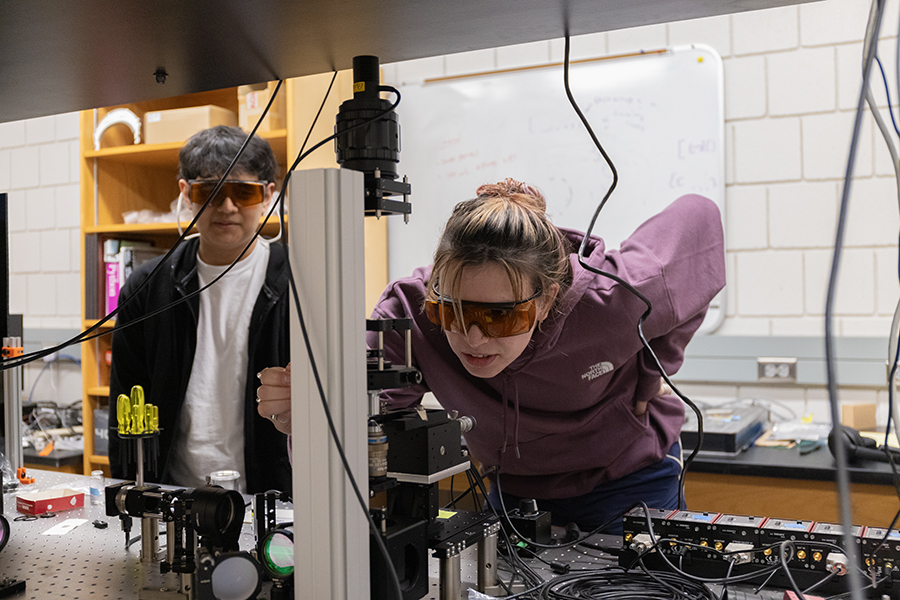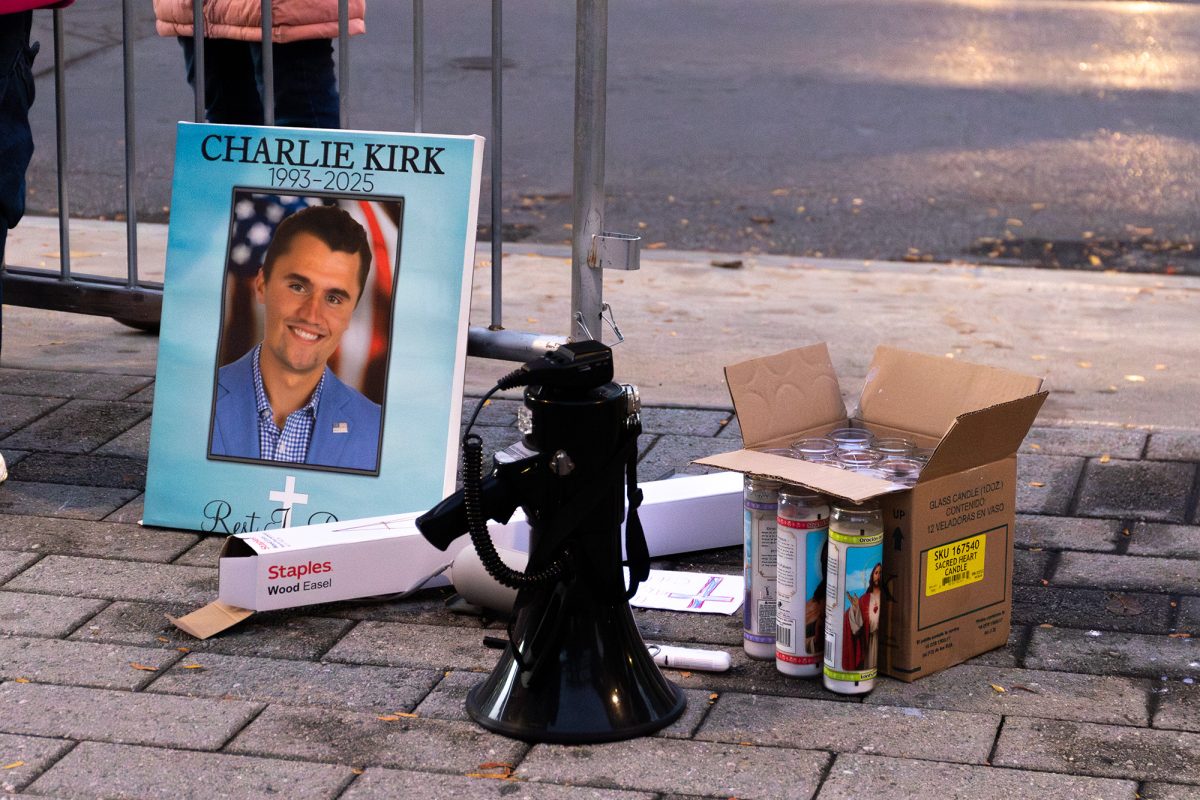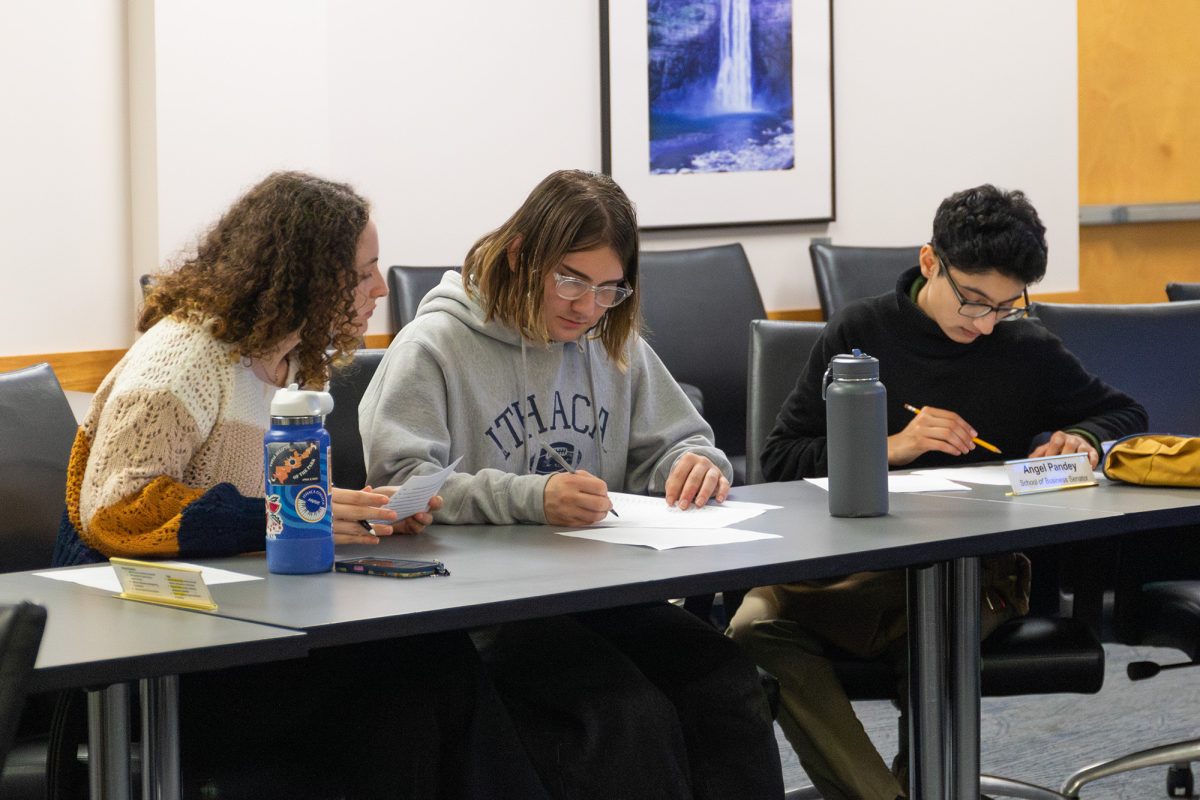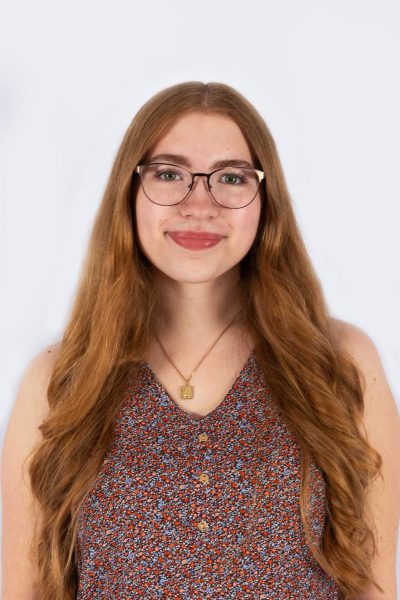In a small lab on the second floor of the Center for Natural Sciences, students in the Department of Physics and Astronomy have been working on a unique project: studying colloidal particles, microscopic particles that are held in water, using optical tweezers — a microscope combined with a laser to hold and trap particles.
Sophomore Fiona Lorenzen, an applied physics major, and junior José Rojas, a mathematics-physics major, are the students now working on the ongoing project with the oversight of Jerome Fung, associate professor in the Department of Physics and Astronomy. The process starts by diluting particles, mainly silica, so they can be seen better under a microscope. Optical tweezers then pinpoint and trap the particles to examine them.
Silica is one of the main components of glass, and also makes up 59% of the Earth’s crust, according to Britannica. Rojas and senior Yash Mohod developed a computer program during summer 2024 that controls the camera that takes pictures of the particles’ seemingly random movements. The camera connects to the microscope and a computer monitor, which Fung said is necessary for safety purposes.
“Because there’s lasers involved, it is not safe to have eyes go down the stream [of the microscope],” Fung said.
Fung said the goal is to learn more about glass by studying the behavior of silica particles and why glass acts more like a solid, even though it has a liquid composition. He said the project has been underway since 2019, after the department purchased the large optical table that the experiment sits on. Since then, students from other classes have been involved in the project and have worked to integrate new components, like code development.
Rojas said he got his start in the project over the summer, after talking with Fung, his physics adviser.
“He said something about coding and something about microscopes that I was really interested in,” Rojas said. “So I said, ‘Yeah, why not?’”
Rojas said the code he initially started working on during summer 2024 helps the different components, like the camera and spatial light modulator, work together simultaneously. Fung said over email that the spatial light modulator controls the position of the microscope. Rojas said that while he learned some coding basics in classes at the college, it was still challenging for him to learn how to understand and work with all the equipment.
“I think that’s why I like [the project], because I was starting to understand a little bit more of everything,” Rojas said.
Lorenzen said she became involved because she was interested in the chemistry and coding aspects of the research.
“I saw this setup and I thought, ‘Oh, that’s fun,’ even though this is pretty complicated stuff,” Lorenzen said.
Lorenzen said she was able to get hands-on experience because of the small size of the department. There are 10 faculty members and 36 students in the department, which offers three undergraduate majors: physics, applied physics and mathematics physics. She said this helped her build quick relationships with her peers and professors, which made it easier to work together.
“It’s given me way more opportunities than I would’ve gotten at a bigger state school,” she said. “You’re closer with your professors, and it feels more like a tight-knit community.”
Fung has helped host events for the Department of Physics and Astronomy, like Retro Rewind Day, which gave students and professors an opportunity to interact by playing retro video games together.
Another aspect of the department that Fung is involved in is its anti-racism and inclusivity plan, which was developed by members of the faculty in December 2020. Fung said women and racial minorities are underrepresented in the physics field.
“We, as a department, decided that we wanted to do what we could do about that here,” Fung said.
The plan states that the department has brought in female physicists as seminar speakers and overhauled the search procedure for department faculty to include a more diverse range of professionals.
Regarding the issues involving inclusivity that the department experiences, Fung said not all students have foundational knowledge of the subjects taught in the introductory classes from high school physics courses. He said that because of this, some students felt overwhelmed while others felt they were not learning much new material.
“If you had the opportunity to take a good high school course, a lot of that stuff is just going to be review, whereas for folks who have never seen that stuff before, it’s all overwhelming,” Fung said. “You would see these gaps open up between students in a way that I personally think was not healthy.”
Fung said he and other faculty in the department modified the curriculum so that students had a more equal starting point, where the topics were new but also helped develop students’ foundational math skills, required in physics work. Fung said via email that even the optical tweezers project can be accessible to newer physics students because it involves elements that are taught in introductory classes.
While it incorporates elements of things she learned in her classes, Lorenzen said she does not necessarily see the project as schoolwork and that she enjoys the laid-back atmosphere.
“I kind of view my research credits as fun little breaks in my day,” Lorenzen said. “I see it as a really fun side adventure.”
But Lorenzen said she also is glad that she is getting hands-on research experience.
“I’m getting to do this really cool research that’s preparing me for research in the real world and exposing me to a bunch of new concepts,” Lorenzen said.









